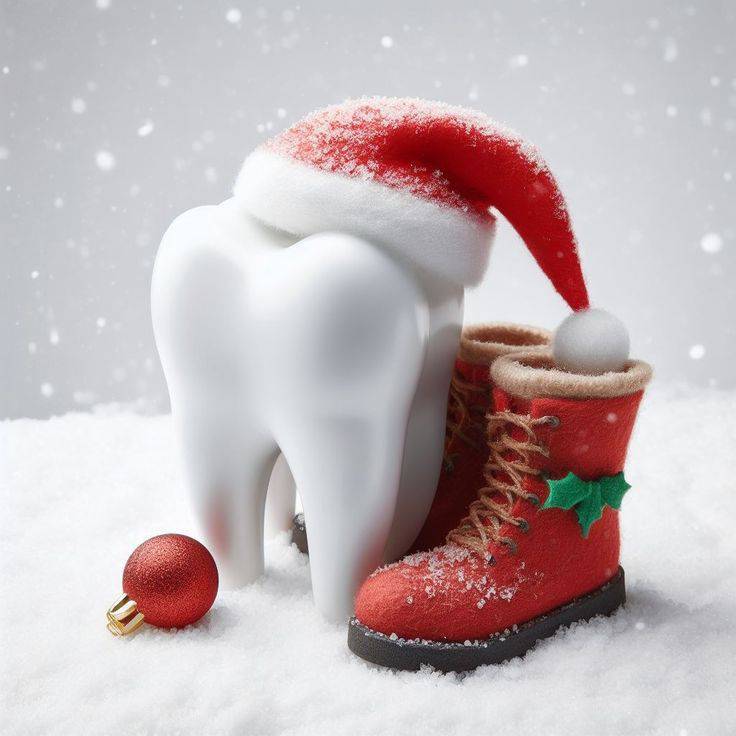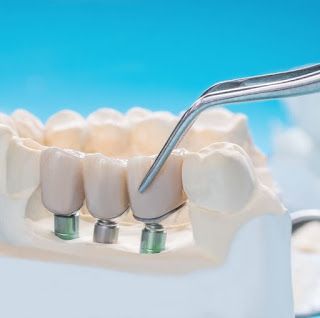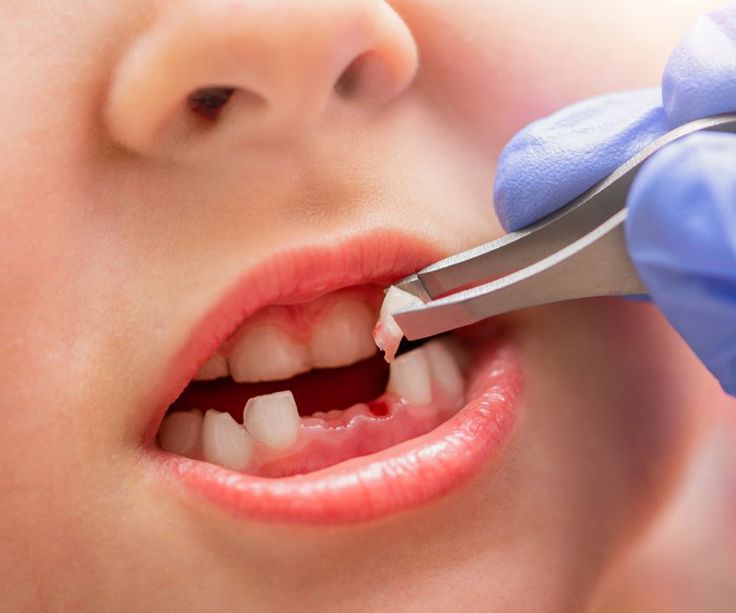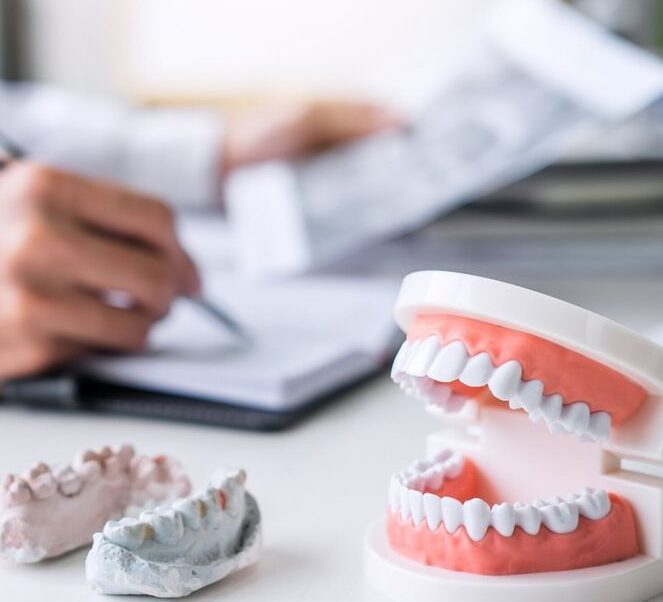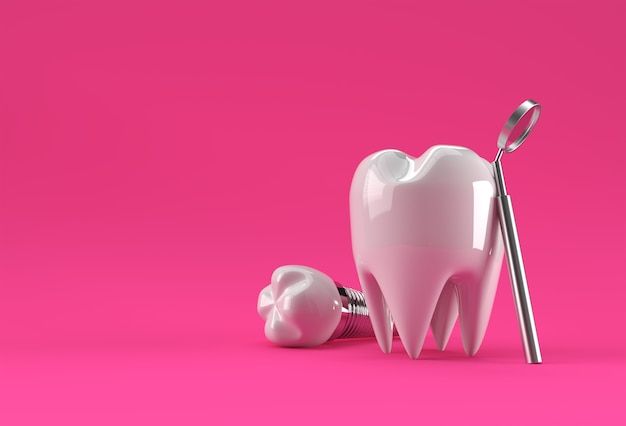Dealing with severe dental pain often requires a combination of at-home remedies and professional dental care. Here are some steps you can take: and any type of Dental Problem . Immediate Relief Over-the-Counter Painkillers Take an over-the-counter pain reliever like ibuprofen or acetaminophen as directed. Ibuprofen is especially effective as it also reduces inflammation. Cold Compress Apply a cold compress or ice pack to the outside of your cheek for 15-20 minutes to numb the area and reduce swelling. Saltwater Rinse Mix half a teaspoon of salt in a glass of warm water and use it as a mouth rinse. It can help reduce inflammation and disinfect the area. Clove Oil Apply a small amount of clove oil to the painful area using a cotton swab. Clove oil has natural analgesic and antibacterial properties. Avoid Trigger Foods Stay away from extremely hot, cold, or sugary foods and drinks that might aggravate the pain. Identify the Cause Dental pain can stem from various issues, such as: Tooth Decay or cavities Abscess (infection in the tooth or gum) Gum Disease Tooth Fracture Impacted Wisdom Teeth Teeth Grinding Professional Care See a Dentist Severe dental pain often requires professional intervention. Schedule an appointment with your dentist as soon as possible. Root Canal or Extraction If the pain is due to an infected or decayed tooth, you may need a root canal or, in extreme cases, tooth extraction. Dental Cleaning For pain caused by gum disease or plaque buildup, a professional cleaning can provide relief. Prevent Future Pain Brush your teeth twice daily with fluoride toothpaste. Floss regularly to clean between your teeth. Visit the dentist regularly for checkups and cleanings. Avoid smoking and maintain a healthy diet low in sugar. If the pain persists or worsens, or if you experience symptoms like fever, swelling, or difficulty swallowing, seek emergency dental care immediately. These could be signs of a serious infection.
Dental Braces can be highly beneficial .
Our Services Braces for Younger Generation: 1. Corrects Misaligned Teeth: Braces can correct crooked, overlapping, or spaced teeth, improving the overall appearance of the smile. 2. Improves Oral Health: Straight teeth are easier to clean, reducing the risk of tooth decay, gum disease, and other oral health issues. Boosts Confidence 3. : A straight, healthy smile can greatly enhance self-confidence and self-esteem, especially during the critical teenage years. 4. Prevents Future Problems: Braces can correct bite issues, such as overbites, underbites, or crossbites, which can lead to more severe problems if left untreated. 5. Enhances Overall Health: A healthy, aligned smile can improve digestion, speech, and overall well-being. Reduced Risk of Injury 6. Reduced Risk of Injury: Protruding teeth can be more prone to injury, and braces can help move them into a safer position. 7. Improved Chewing and Digestion: Properly aligned teeth can improve chewing and digestion, reducing the risk of digestive issues. Best Age for Dental Braces: The American Association of Orthodontists recommends that children have their first orthodontic evaluation by age Early Treatment (7-10 years old): For severe issues, such as crossbites or underbites. 2. Adolescent Treatment (11-14 years old): For most orthodontic issues, as the teeth and jaw are still developing. 3. Teenage Treatment (15-18 years old): For more complex issues or for those who missed earlier treatment.
Happy New Year To All of You
As we welcome 2025, we extend our warmest wishes to all our valued clients. May this year bring joy, prosperity, and endless reasons to smile. Happy New Year To All of You As we welcome 2025, we extend our warmest wishes to all our valued clients. May this year bring joy, prosperity, and endless reasons to smile. Your trust in us to care for your oral health means the world, and we are committed to continuing to provide you with the highest level of care and service. Together, let’s make this year not only happy but healthy—starting with your beautiful smile! A new year is the perfect time to focus on your dental health. Regular brushing, flossing, and check-ups play a vital role in keeping your teeth and gums healthy. Remember, good oral health is not just about a sparkling smile; it’s also essential for your overall well-being. Conditions like gum disease, cavities, and even oral infections can impact your general health if left untreated. By maintaining consistent dental care, you invest in a brighter, healthier future. Explore Collection New year Resolution Let’s make 2025 the year of confident, dazzling smiles. We’re here to support you every step of the way. From routine cleanings to advanced treatments, our team is dedicated to ensuring your smile remains as vibrant as ever. Don’t forget to schedule your bi-annual check-up—it’s the easiest resolution to keep for a healthier you. Let’s make 2025 the year of confident, dazzling smiles. Thank you for choosing us to be a part of your journey. Here’s to a fantastic year ahead! Call us at (806) 636-5555 ,Mail us at : brownfielddental@gmail.com or visit https://brownfielddentaltx.com/home to schedule your appointment. Find us at: 101 Seagraves Rd, Brownfield, TX 79316. Purchase Now
New year Resolution for Dental cavity
Let your smile sparkle brighter than the festive lights! and Make your dental health a priority as you prepare for the New Year. The Brownfield dentist in Brownfield is conveniently located near to the Brownfield Sport Complex and Coleman Park is the best option available for any type of Dental Problem . A great New Year’s resolution for preventing dental cavities could be: “Commit to excellent oral health care habits and make proactive choices to maintain cavity-free teeth throughout the year.” Let your smile sparkle brighter than the festive lights! and Make your dental health a priority as you prepare for the New Year. Here are some actionable steps to support this resolution: Brush Twice Daily: Use fluoride toothpaste and a soft-bristled toothbrush for at least two minutes, morning and night. Floss Regularly: Clean between your teeth daily to remove food particles and plaque. Use Interdental Brushes: For added effectiveness in cleaning between teeth. Reduce Sugar Intake: Limit sugary snacks and drinks that promote cavity formation. Stay Hydrated: Drink plenty of water, preferably fluoridated, to help wash away food particles and bacteria. Eat a Balanced Diet: Include foods rich in calcium and phosphorus for strong teeth. Regular Dental Check-ups: Visit your dentist every six months for professional cleaning and early detection of potential issues. Chew Sugar-Free Gum: Stimulate saliva production to protect against cavities. Use Mouthwash: Opt for one with fluoride to strengthen enamel and fight bacteria. Avoid Tobacco Products: These can lead to oral health issues, including cavities. Start small by incorporating one or two habits and build on them throughout the year! Call us at 281-672-7178, Mail us at : myteethdentaltx@gmail.com or visit myteethdentaltx.com to schedule your appointment. Find us at: 1199 blossom street Webstar, TX 77598.
Merry Christmas to All
This Christmas, let your smile sparkle brighter than the festive lights! and Make your dental health a priority as you prepare for the New Year. A healthy smile is always the best gift you can give yourself and your loved ones. Enjoy all your favorite holiday treats worry-free with strong, healthy teeth. Start the New Year with confidence and a radiant smile. Book your routine dental check-up before the year ends. Protect your teeth from holiday indulgences with our expert care. Teeth whitening services are available to make your smile shine in every photo. through this u can fix your smile . Teeth Whitening: One of the most common cosmetic dental procedures, teeth whitening aims to lighten teeth and remove stains and discoloration. This can be done in-office by a dentist or at home using whitening kits prescribed by a dentist. Dental Veneers: Veneers are thin, custom-made shells crafted from tooth-colored materials (usually porcelain or composite resin) designed to cover the front surface of teeth. They can improve the appearance of teeth that are discolored, misshapen, or unevenly spaced. Dental Implants: Implants are used to replace missing teeth. They are surgically placed into the jawbone and serve as a foundation for replacement teeth (crowns or bridges). Dental implants look and feel like natural teeth and can greatly enhance the appearance of a smile. Dental Bonding: Bonding involves applying a tooth-colored composite resin to repair teeth that are chipped, cracked, or discolored. It can also be used to close small gaps between teeth and improve the appearance of teeth that are misaligned. Preventive care today means fewer worries tomorrow—visit us for advice! Holiday stress? Relax knowing your dental health is in safe hands with us. A fresh start begins with a fresh, clean mouth. Let us help you maintain healthy gums and cavity-free teeth. Celebrate the holidays with the confidence of a dazzling smile. From all of us at [Your Dental Clinic Name], we wish you joy, health, and happiness. See you soon for a brighter, healthier smile— Happy Holidays and a Happy New Year from all of us 🎉 Call us at 281-672-7178, Mail us at : myteethdentaltx@gmail.com or visit myteethdentaltx.com to schedule your appointment. Find us at: 1199 blossom street Webstar, TX 77598.
Fixed Dental Bridge
A fixed dental bridge is a restorative dental procedure used to replace one or more missing teeth. It is “fixed” because it is permanently anchored to natural teeth or implants and cannot be removed by the patient.
Dental Emergency
While accidents can happen to anyone, wearing proper protective gear, including a helmet and face shield, can help reduce the risk of dental injuries in a motorcycle accident.
Fear of the Dentist in children
Dental phobia in children can be challenging, but with gentle approaches and positive experiences, it can be overcome. Causes of Dental Phobia in Children: 1. Past traumatic experiences 2. Fear of pain or injections 3. Unfamiliar environment or equipment 4. Lack of control or understanding 5. Parental anxiety or fear So lets discuss what are the Signs of Dental Phobia in Children. Resistance to dental visits , Anxiety or crying during appointments , Refusal to open mouth or cooperate , Physical symptoms that is sweating, trembling . Additional Techniques: 1. Desensitization: Gradual exposure to dental environment 2. Relaxation techniques: Deep breathing, visualization 3. Distraction methods: Music, videos, or games 4. Topical anesthesia: Numbing gel or spray 5. Conscious sedation: Oral or inhalation sedation By implementing these strategies, you can help your child overcome dental phobia and develop a positive attitude towards oral health.
Partial Denture
A half denture, also known as a partial denture, is a removable dental appliance designed to replace missing teeth in a specific section of the mouth while preserving the natural teeth that remain. 1. Restores Functionality Chewing: It allows you to chew food more effectively, which improves digestion and overall nutrition. Speaking: It helps in better pronunciation of words, as missing teeth can sometimes cause speech issues. 2. Enhances Appearance Aesthetic Appeal: Partial dentures fill gaps in your smile, improving facial aesthetics and boosting self-confidence. Prevents Sagging: Missing teeth can lead to sagging facial muscles; partial dentures provide support to the facial structure. Partial Dentures Partial dentures are prosthetic devices designed to replace one or several missing teeth in either the upper or lower jaw. They consist of replacement teeth attached to a gum-colored base, often made from acrylic or metal, which blends seamlessly with the natural gum line. Flexible Partial Dentures: Constructed from a flexible, gum-colored material, these dentures offer enhanced comfort and aesthetics, as they adapt more naturally to the contours of the mouth. Implant-Supported Partial Dentures: For increased stability and reduced movement, implants can be surgically placed in the jawbone to support the partial denture, creating a more secure fit.
Tooth extraction
Tooth extraction is a dental procedure in which a tooth is removed from its socket in the bone. This can be necessary for a variety of reasons, including severe decay, infection, crowding, or trauma. Here’s an overview of the process, reasons, preparations, and post-procedure care. 1. Reasons for Tooth Extraction Tooth Decay or Infection: When a tooth is severely decayed or infected, extraction may be needed to prevent the infection from spreading. Crowding: Orthodontic treatments, such as braces, sometimes require the removal of a tooth to align teeth properly. Impacted Teeth: Wisdom teeth are often impacted, meaning they do not fully emerge from the gums and may require extraction. Periodontal (Gum) Disease: Severe gum disease can damage the supporting tissues and bone, making extraction necessary. 2. Types of Tooth Extractions Simple Extraction: This is performed on a tooth that is visible in the mouth and usually involves loosening the tooth with an instrument called an elevator, then removing it with forceps. Surgical Extraction: For teeth that are not visible (e.g., impacted teeth), an oral surgeon makes an incision in the gum to access and remove the tooth. 3. Preparation Examination: The dentist will take X-rays to evaluate the position and condition of the tooth. Medical History: You’ll need to inform the dentist of any medications, supplements, or existing medical conditions. Anesthesia: Local anesthesia is usually administered for a simple extraction, while surgical extractions may require sedation or general anesthesia. 4. Procedure Simple Extraction: After numbing the area, the dentist loosens the tooth with an elevator and then removes it with forceps. Surgical Extraction: The oral surgeon makes an incision in the gum, may remove bone around the tooth, and extracts it in sections if necessary. 5. Aftercare Bleeding Control: You’ll bite down on gauze to help stop bleeding, which should subside within a few hours. Pain Management: Over-the-counter pain relievers or prescribed medications help with pain and swelling. Avoid Rinsing: For the first 24 hours, avoid rinsing your mouth to prevent dislodging the blood clot. Diet: Soft foods are recommended for the first few days, and avoid using straws, as the suction can disturb the clot.



